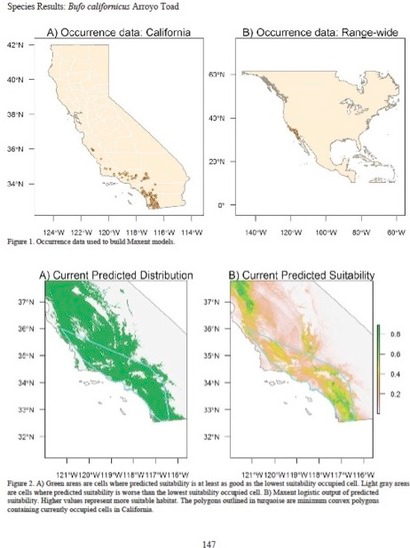This once abundant toad occupies sandy seasonal streamside habitats where they bury themselves during the dry season. Their habitat needs are very specialized: exposed sandy stream sides and vegetation for hiding in; calm pools with gravel bottoms free of silt for breeding. Emerging with the first rains, they generally forage at night eating invertebrates. Arroyo toads tend to use the same breeding areas and do not move away to seek out new territories. They are completely absent in about 75% of their historic range due to the usual culprits: habitat loss, non-native predators and invasive plant species but also by unnatural water regimes like dam releases and our ephemeral streams running year round due to urban run-off. Already listed as Endangered, climate change will add even more stress to this species. Increased severity of droughts so dry conditions will be prolonged, heavier rainfall when rain events do occur, increased wildfires add to silt loads in stream beds and the probable increase in invasive plant species may push this guy over the edge!
Here is a chart predicting habitat suitablilty for the Arroyo Toad…
“California Amphibian and Reptile Species of Future Concern: Conservation and Climate Change”, pg. 147; by Amber N. Wright, Robert J. Hijmans, Mark W. Schwartz, and H. Bradley Shaffer University of California, Davis: August 2013.
Here are links to more information about California species and climate change…
CA species at risk:http://www.biologicaldiversity.org/programs/climate_law_institute/350_reasons/california.shtml
Vulnerability of California Fish, Wildlife, and Plants to Climate Change https://www.wildlife.ca.gov/Conservation/Climate-Science/Resources/Vulnerability



